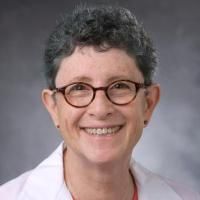Umbilical cord blood: a guide for primary care physicians.
Abstract
Umbilical cord blood stem cell transplants are used to treat a variety of oncologic, genetic, hematologic, and immunodeficiency disorders. Physicians have an important role in educating, counseling, and offering umbilical cord blood donation and storage options to patients. Parents may donate their infant's cord blood to a public bank, pay to store it in a private bank, or have it discarded. The federal government and many state governments have passed laws and issued regulations regarding umbilical cord blood, and some states require physicians to discuss cord blood options with pregnant women. Five prominent medical organizations have published recommendations about cord blood donation and storage. Current guidelines recommend donation of umbilical cord blood to public banks when possible, or storage through the Related Donor Cord Blood Program when a sibling has a disease that may require a stem cell transplant. Experts do not currently recommend private banking for unidentified possible future use. Step-by-step guidance and electronic resources are available to physicians whose patients are considering saving or donating their infant's umbilical cord blood.
Type
Department
Description
Provenance
Subjects
Citation
Permalink
Collections
Scholars@Duke

Paul Langlie Martin
For most of my career in Pediatric Hematology/Oncology I have focused on the use of stem cell transplant for the treatment of pediatric leukemias (ALL, AML, CML and JMML) and other non-malignant blood disorders, such as sickle cell disease, hemaphagocytic disorders, Wiskott-Aldrich, aplastic anemia, Diamond-Blackfan Anemia, as well as inherited metabolic diseases. In addition to focusing on determining the best use of stem cell transplants for these disorders, I have also been involved in clinical research investigating the prevention and treatment of transplant related morbidity, particularly veno-occlusive disease of the liver, infections and diffuse alveolar hemorrhage. As study chair for the Children's Oncology Group protocol 9904, I was involved in the development, implementation and analysis of a large, international frontline study of childhood acute lymphoblastic leukemia. Results from this study show that a significant number of children with certain favorable cytogenetic abnormalities in their leukemic cells and who have a rapid response to their initial chemotherapy can expect to have a >95% chance of cure when treated with relatively low intensity chemotherapy.
I have concentrated on providing high quality care for high risk leukemia patients who require high intensity therapies, such as stem cell transplant and immunotherapy. As a member of the Pediatric Transplant and Cellular Therapy Division I provide clinical care for these patients. As a member of various cooperative groups and local PI for several drug trials, I have worked to provide better care and more specific therapies for the toxicities associated with stem cell transplant.
I have also collaborated with the Pediatric Immunology Division to provide a life-saving therapy for a small group of patients with thymic dysfunction, which causes severe immunodeficiency. Our clinical team now provides support during these patients hospital admissions for donor thymus tissue implantation. We once again achieved a new record for the number of implanted patients during the 2022-2023 academic year.

Joanne Kurtzberg
Dr. Kurtzberg is an internationally renowned expert in pediatric hematology/oncology, pediatric blood and marrow transplantation, umbilical cord blood banking and transplantation, and novel applications of cord blood and birthing tissues in the emerging fields of cellular therapies and regenerative medicine. Dr. Kurtzberg serves as the Director of the Marcus Center for Cellular Cures (MC3), Director of the Pediatric Transplant and Cellular Therapy Program, Director of the Carolinas Cord Blood Bank, and Co-Director of the Stem Cell Transplant Laboratory at Duke University. The Carolinas Cord Blood Bank is an FDA licensed public cord blood bank distributing unrelated cord blood units for donors for hematopoietic stem cell transplantation (HSCT) through the CW Bill Young Cell Transplantation Program. The Robertson GMP Cell Manufacturing Laboratory supports manufacturing of RETHYMIC (BLA, Enzyvant, 2021), allogeneic cord tissue derived and bone marrow derived mesenchymal stromal cells (MSCs), and DUOC, a microglial/macrophage cell derived from cord blood.
Dr. Kurtzberg’s research in MC3 focuses on translational studies from bench to bedside, seeking to develop transformative clinical therapies using cells, tissues, molecules, genes, and biomaterials to treat diseases and injuries that currently lack effective treatments. Recent areas of investigation in MC3 include clinical trials investigating the safety and efficacy of autologous and allogeneic cord blood in children with neonatal brain injury – hypoxic ischemic encephalopathy (HIE), cerebral palsy (CP), and autism. Clinical trials testing allogeneic cord blood are also being conducted in adults with acute ischemic stroke. Clinical trials optimizing manufacturing and testing the safety and efficacy of cord tissue MSCs in children with autism, CP and HIE and adults with COVID-lung disease are underway. DUOC, given intrathecally, is under study in children with leukodystrophies and adults with primary progressive multiple sclerosis.
In the past, Dr. Kurtzberg has developed novel chemotherapeutic drugs for acute leukemias, assays enumerating ALDH bright cells to predict cord blood unit potency, methods of cord blood expansion, potency assays for targeted cell and tissue based therapies. Dr. Kurtzberg currently holds several INDs for investigational clinical trials from the FDA. She has also trained numerous medical students, residents, clinical and post-doctoral fellows over the course of her career.
Unless otherwise indicated, scholarly articles published by Duke faculty members are made available here with a CC-BY-NC (Creative Commons Attribution Non-Commercial) license, as enabled by the Duke Open Access Policy. If you wish to use the materials in ways not already permitted under CC-BY-NC, please consult the copyright owner. Other materials are made available here through the author’s grant of a non-exclusive license to make their work openly accessible.
